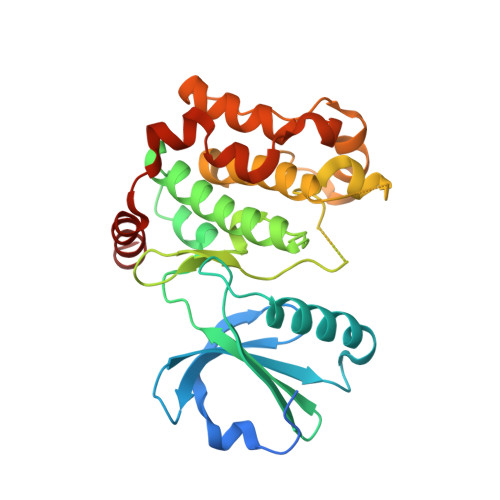Structure-Based Design of Selective Salt-Inducible Kinase Inhibitors.
Tesch, R., Rak, M., Raab, M., Berger, L.M., Kronenberger, T., Joerger, A.C., Berger, B.T., Abdi, I., Hanke, T., Poso, A., Strebhardt, K., Sanhaji, M., Knapp, S.(2021) J Med Chem 64: 8142-8160
- PubMed: 34086472
- DOI: https://doi.org/10.1021/acs.jmedchem.0c02144
- Primary Citation of Related Structures:
7B30, 7B31, 7B32, 7B33, 7B34, 7B35, 7B36 - PubMed Abstract:
Salt-inducible kinases (SIKs) are key metabolic regulators. The imbalance in SIK function is associated with the development of diverse cancers, including breast, gastric, and ovarian cancers. Chemical tools to clarify the roles of SIK in different diseases are, however, sparse and are generally characterized by poor kinome-wide selectivity. Here, we have adapted the pyrido[2,3- d ]pyrimidin-7-one-based p21-activated kinase (PAK) inhibitor G-5555 for the targeting of SIK, by exploiting differences in the back-pocket region of these kinases. Optimization was supported by high-resolution crystal structures of G-5555 bound to the known off-targets, MST3 and MST4, leading to a chemical probe, MRIA9, with dual SIK/PAK activity and excellent selectivity over other kinases. Furthermore, we show that MRIA9 sensitizes ovarian cancer cells to treatment with the mitotic agent paclitaxel, confirming earlier data from genetic knockdown studies and suggesting a combination therapy with SIK inhibitors and paclitaxel for the treatment of paclitaxel-resistant ovarian cancer.
Organizational Affiliation:
Institute of Pharmaceutical Chemistry, Johann Wolfgang Goethe University, Max-von-Laue-Str. 9, Frankfurt am Main 60438, Germany.















